calsfoundation@cals.org
David Hampton Pryor (1934–)
Thirty-ninth Governor (1975–1979)
David Hampton Pryor, arguably the most popular Arkansas politician of the modern era, held four different political offices during his career: state House of Representatives member, U.S. congressman, governor, and U.S. senator. A Democrat, Pryor played a crucial role in limiting the rise of Republicanism in Arkansas in the latter decades of the twentieth century.
David Pryor was born on August 29, 1934, in Camden (Ouachita County) to William Edgar Pryor and Susan Pryor. His father and grandfather were both sheriffs. His mother was the first Arkansas woman to run for elective office (she ran unsuccessfully for county circuit clerk in 1926); she later won a school board race. Pryor had three siblings.
The role of Pryor’s family in public life in Ouachita County inculcated in him the importance of public service. Pryor graduated from the University of Arkansas (UA) in Fayetteville (Washington County) in 1957 with a degree in government. While in college, he was heavily involved in student government, including service as a student senator and in a number of other leadership roles on campus. He married Barbara Jean Lunsford on November 28, 1957. Pryor returned to Camden with his new wife to start and edit a weekly newspaper, The Ouachita Citizen. During the height of the Orval Faubus era, the paper served as a progressive counter voice in the southeast quadrant of the state from the time of its establishment in 1957 until its demise in 1962.
Pryor continued his opposition to the Faubus machine after being elected to the state House of Representatives in 1960 at the age of twenty-six. In the legislature, Pryor joined other reformist members to work for change in a number of public policy areas. The group was nicknamed the Young Turks and included Hardy W. Croxton of Rogers (Benton County), Hayes McClerkin of Texarkana (Miller County), and Jim Brandon of Little Rock (Pulaski County). While in the House, Pryor returned to school at the University of Arkansas in Fayetteville to complete a law degree, finishing in 1964. Because other political opportunities quickly arose, Pryor practiced law for only four years before entering full-time electoral posts.
In 1966, Oren Harris, longtime U.S. congressman from south Arkansas, retired. Pryor joined a field of five Democrats and one Republican running for the spot and was elected to Congress after a competitive primary race with future federal judge Richard Arnold as his toughest challenger. Despite evidence that he was more liberal on racial issues than his constituents, Pryor faced no opposition in two reelection efforts. In 1972, Pryor challenged the reelection of conservative Democratic U.S. senator John L. McClellan, who was seeking his sixth term in the Senate. Pryor’s youth (he was thirty-seven at the time of the race) and dynamic style contrasted well with the elderly McClellan. Pryor trailed by only 16,530 in the first primary. Because the other major candidate who failed to make the runoff (Ted Boswell) was also more progressive than McClellan, Pryor entered the runoff as a strong favorite, but in this last election before the overhaul of federal election finance laws, a number of businessmen—including Witt Stephens—poured money into McClellan’s effort. The turning point in the campaign came in a rare (for the day) televised debate, when an aggressive McClellan strongly attacked Pryor for his ties to organized labor. McClellan won the nomination with fifty-two percent of the two-candidate vote; it would be Pryor’s last political defeat.
After practicing law for two years, Pryor entered the open race for governor of the state in 1974. Several candidates joined the field, but Pryor’s old adversary, former governor Orval Faubus, provided the strongest opposition. Arkansas’s politics had changed dramatically in the eight years since Faubus had left the governorship, and Pryor won the first primary with the bare majority of the vote. Pryor beat Ken Coon, his Republican opponent, in the general election and became Arkansas’s thirty-ninth governor in January 1975.
The four-year governorship of Dale Bumpers that preceded Pryor’s had been a period of abrupt change in Arkansas government, with the passage of significant reforms in a wide variety of policy areas, a historic income tax increase, and a major reorganization of government. Pryor’s governorship continued these modernizing changes including calling a constitutional convention to reform the state’s constitution and the creation of a state natural and cultural heritage department. Perhaps the most significant contribution was the appointment of a large number of African Americans and women to high-profile positions.
Pryor’s greatest failure as governor was his inability to pass his “Arkansas Plan,” introduced with aplomb in late 1976 and the focus of Pryor’s work in the months following his easy reelection that November. The plan called for a twenty-five percent permanent decrease in the state income tax and a bar to expansion of the state sales tax. To enlarge the role of local governments, these units would be given dramatically enhanced power to raise their own revenues through a variety of taxes. In exchange, these local governments would lose the state funds, so-called “turnbacks,” that were important to funding their programs. Pryor invested heavily in the passage of the program that he touted as a way to get government closer to the people, holding town hall meetings throughout the state. A remark at one of these meetings gave the plan its nickname, derogatorily used by its many opponents—the “coon dog” plan. Pryor said at one session that the citizens of the state would decide whether the extra money that they received as a result of the income tax cut could be spent on raising local taxes or on “a new shotgun or coon dog.” The fear that local voters would make the latter choice raised the enmity for the plan by local government officials and education advocates.
The fiscal conservatism expressed in the plan was useful for Pryor as he joined the race for the Senate seat he had failed to gain in 1972. Two well-funded, sitting U.S. House members joined him in the Democratic primary: Jim Guy Tucker and Ray Thornton. The three-way race became one of the classic campaigns in the history of the state. A runoff was certain, but which two candidates would make that runoff was not predictable. Pryor led the ticket by just over 10,000 votes and faced Tucker in the runoff. In that short campaign, Pryor successfully attacked both Tucker’s liberalism and the fact that he had missed large numbers of votes in Congress. Pryor won the runoff by just under fifty-five percent of the vote. Pryor easily won the general election and headed to the U.S. Senate.
Bill Clinton, who, along with Bumpers and Pryor, became one of what renowned Arkansas political scientist Diane Blair termed the “Big Three” of modern Arkansas politics, replaced Pryor as governor. These three successful Democratic politicians shared a basic progressivism that was rare in the increasingly conservative—and increasingly Republican—South. Pryor had a highly personal style that connected him deeply with Arkansas voters. Political scientist Richard Fenno recounted his observation of Pryor in action when home from the Senate: “To come off the road and sit with him for an hour in a Little Rock hotel lobby and eat an evening meal with him and some friends in a Little Rock steakhouse is to experience a steady flow of exchanges with people…who stop by to say hello, introduce themselves, discuss a mutual friend, share a reminiscence, ask for an autograph, leave a problem, give advice, or tell a story….It would not be correct to call them interruptions or intrusions, for the senator is as eager to make contact as they are.”
This personal style was particularly beneficial in Pryor’s only contested race for reelection, in 1984 against Republican Ed Bethune, the central Arkansas representative to Congress. Bethune’s campaign was augmented by a number of visits by popular Republican president Ronald Reagan on Bethune’s behalf. Pryor fended off the challenge with 57.3 percent of the vote. In 1990, Pryor faced no opponents in his bid for reelection.
In the U.S. Senate, Pryor became best known for two areas of policy work: aging and taxpayer fairness. Pryor eventually became chair of the Senate Special Committee on Aging, where he focused on controlling prescription drug prices. From his position on the Senate Finance Committee, Pryor worked to see that taxpayers were not harassed by the Internal Revenue Service, as highlighted in the Taxpayers’ Bill of Rights first passed in 1988, and that those tax dollars were spent in a prudent manner, especially by the Pentagon. Pryor’s popularity with his colleagues was shown by his election to party leadership positions including secretary of the Democratic Conference, third in the Senate Democratic Leadership. Late in his career, he became an active proponent for Clinton’s presidential campaign and, after Clinton won in 1992, an important liaison between the Senate and the White House.
After his third full term, in 1996, Pryor decided to retire from the Senate seat. Soon after retirement, Pryor entered academia, teaching a number of courses at his alma mater and, in 2000, becoming director of the Institute of Politics at Harvard University’s John F. Kennedy School of Government. He also contributed his unexpended campaign funds to the University of Arkansas to process his gubernatorial and senatorial papers and promote other historical archiving; in 2005, that program became the David and Barbara Pryor Center for Oral and Visual History.
In 2002, Pryor returned to electoral politics in Arkansas, not as a candidate, but as a fixture in the U.S. Senate campaign advertisements of his son, Mark. The younger Pryor won the Senate seat once held by his father. In 2004, David Pryor was named the inaugural dean of the University of Arkansas Clinton School of Public Service, staying in that position until 2006. In 2008, he published his autobiography, A Pryor Commitment, co-written by Don Harrell; that same year, he was appointed the interim chair of the state Democratic Party following the shooting death of Bill Gwatney. He was appointed to the University of Arkansas Board of Trustees by Governor Mike Beebe in 2009. During his tenure on the board, he has questioned the wisdom of stadium expansion and athletics spending. On October 10, 2016, he suffered a stroke that necessitated surgery but has since recovered.
For additional information:
Blair, Diane D. “The Big Three of Late Twentieth-Century Arkansas Politics: Dale Bumpers, Bill Clinton, and David Pryor.” Arkansas Historical Quarterly 54 (Spring 1995): 53–79.
Donovan, Timothy P., Willard B. Gatewood, Jr., and Jeannie M. Whayne, eds. The Governors of Arkansas: Essays in Political Biography. 2d ed. Fayetteville, AR: University of Arkansas Press, 1995.
Kincaid, Diane. “The Arkansas Plan: Coon Dogs or Community Service?” Publius 8 (Winter 1978): 117–134.
Pryor, David, and Don Harrell. A Pryor Commitment: The Autobiography of David Pryor. Little Rock: Butler Center Books, 2008.
Pryor, David. “Interview with David Pryor.” April 14, 2008. Audio online at Butler Center AV/AR Audio Video Collection. David Pryor Interview (accessed July 6, 2023).
Jay Barth
Hendrix College
 Divergent Prosperity and the Arc of Reform, 1968–2022
Divergent Prosperity and the Arc of Reform, 1968–2022 Politics and Government
Politics and Government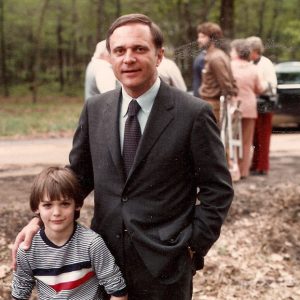 Camp Nelson Rededication
Camp Nelson Rededication  Five Arkansas Governors
Five Arkansas Governors 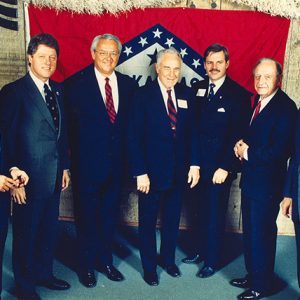 Governors' Reunion; 1986
Governors' Reunion; 1986 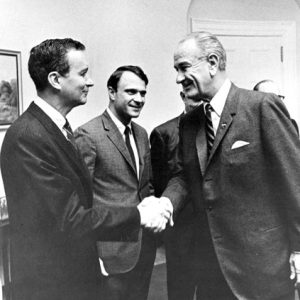 John Paul Hammerschmidt
John Paul Hammerschmidt 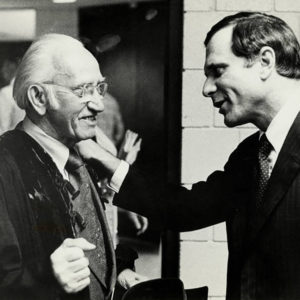 Leflar and Pryor
Leflar and Pryor 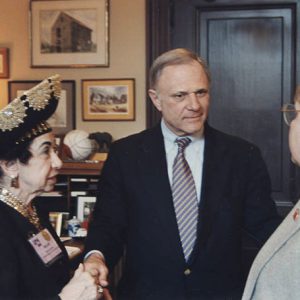 Willie Oates and David Pryor
Willie Oates and David Pryor  David Pryor Campaigning
David Pryor Campaigning 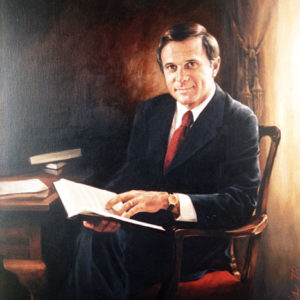 David Pryor
David Pryor 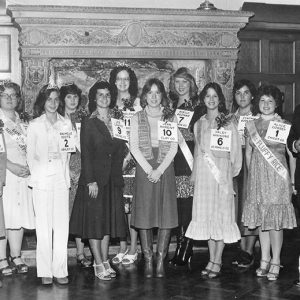 David Pryor and Miss Fluffy Rice Contestants
David Pryor and Miss Fluffy Rice Contestants 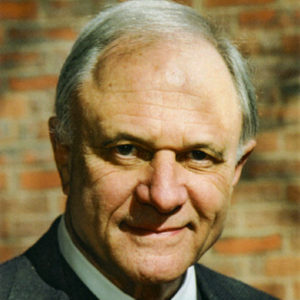 A Pryor Commitment
A Pryor Commitment 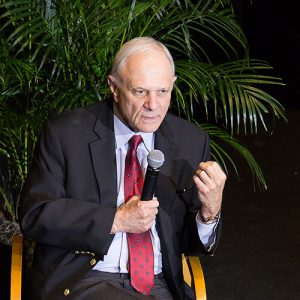 David Pryor
David Pryor 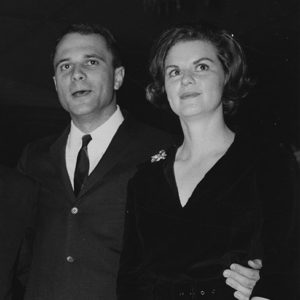 Pryors
Pryors  Pryors Campaigning
Pryors Campaigning 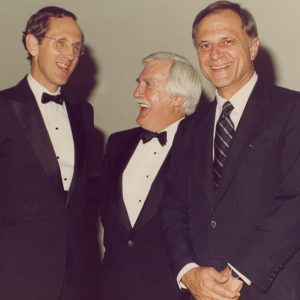 Westbrook Testimonial Dinner
Westbrook Testimonial Dinner 




Comments
No comments on this entry yet.